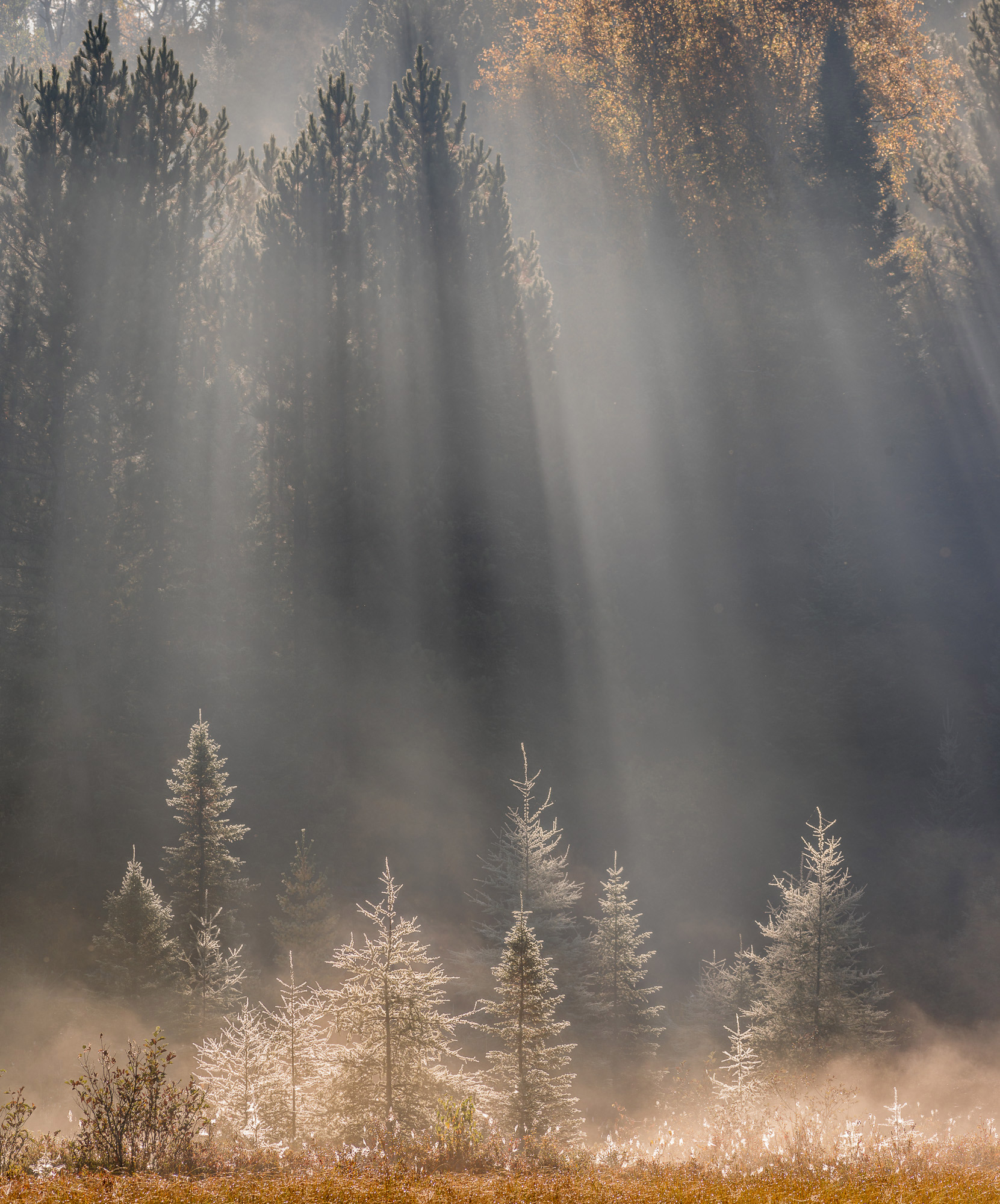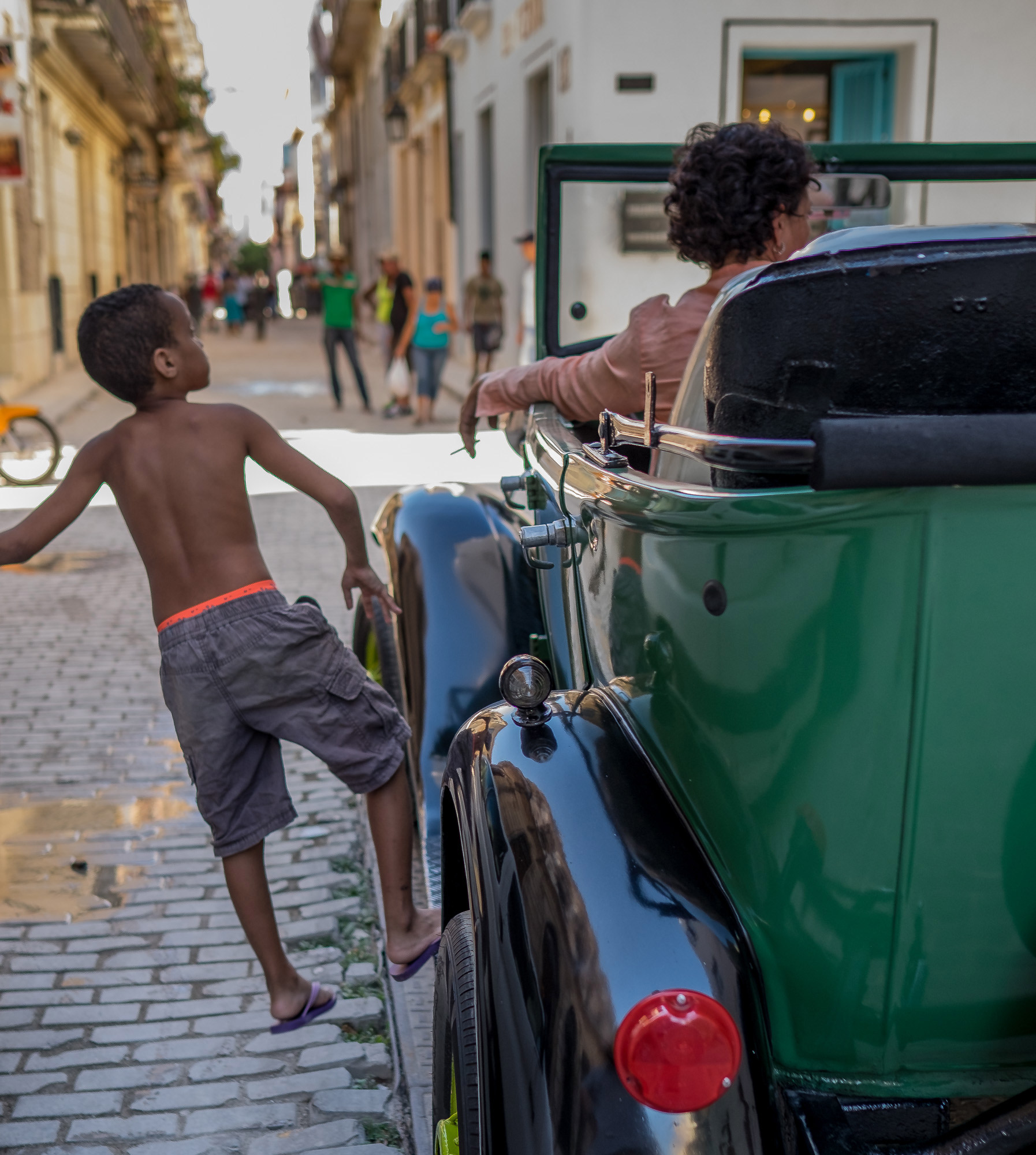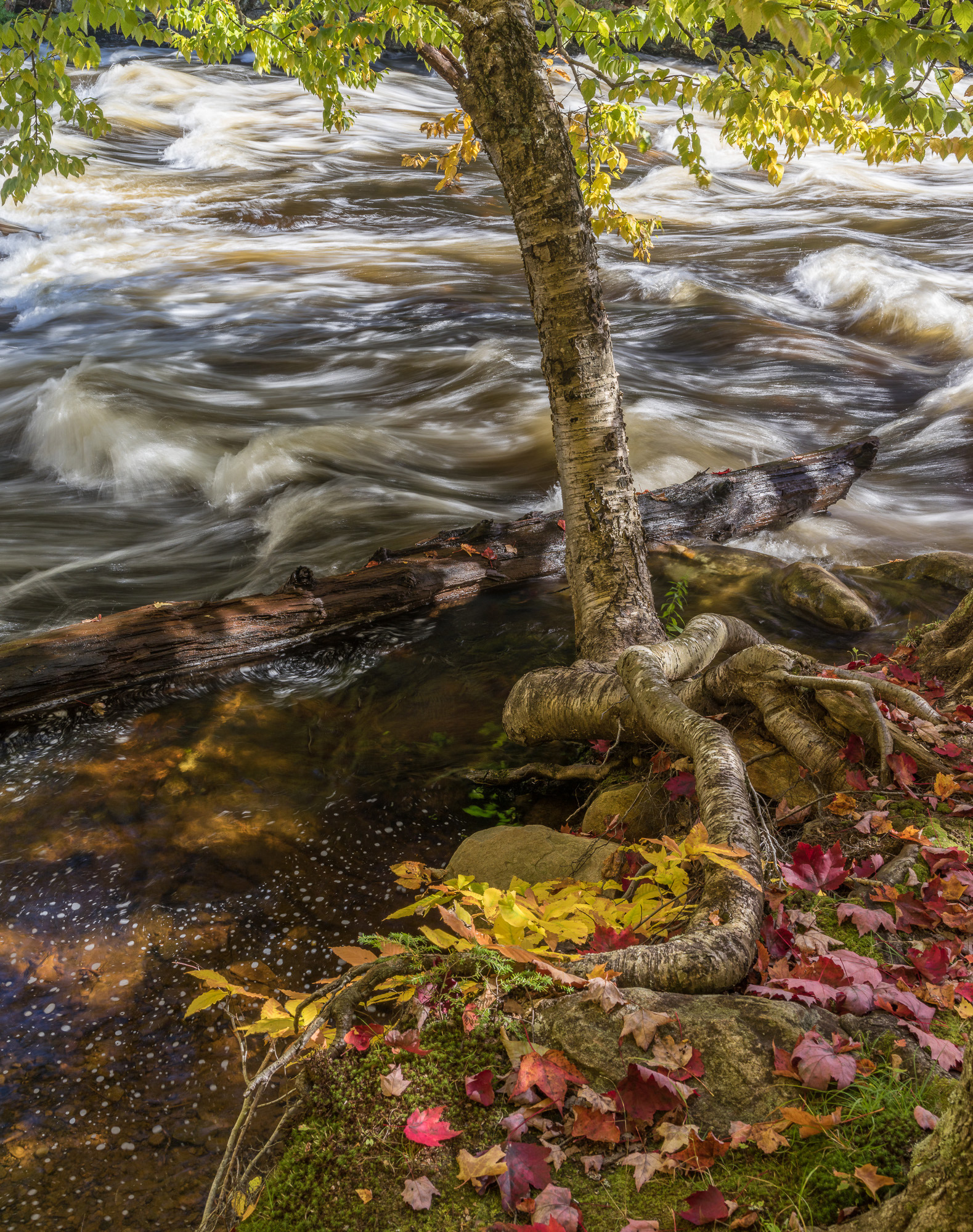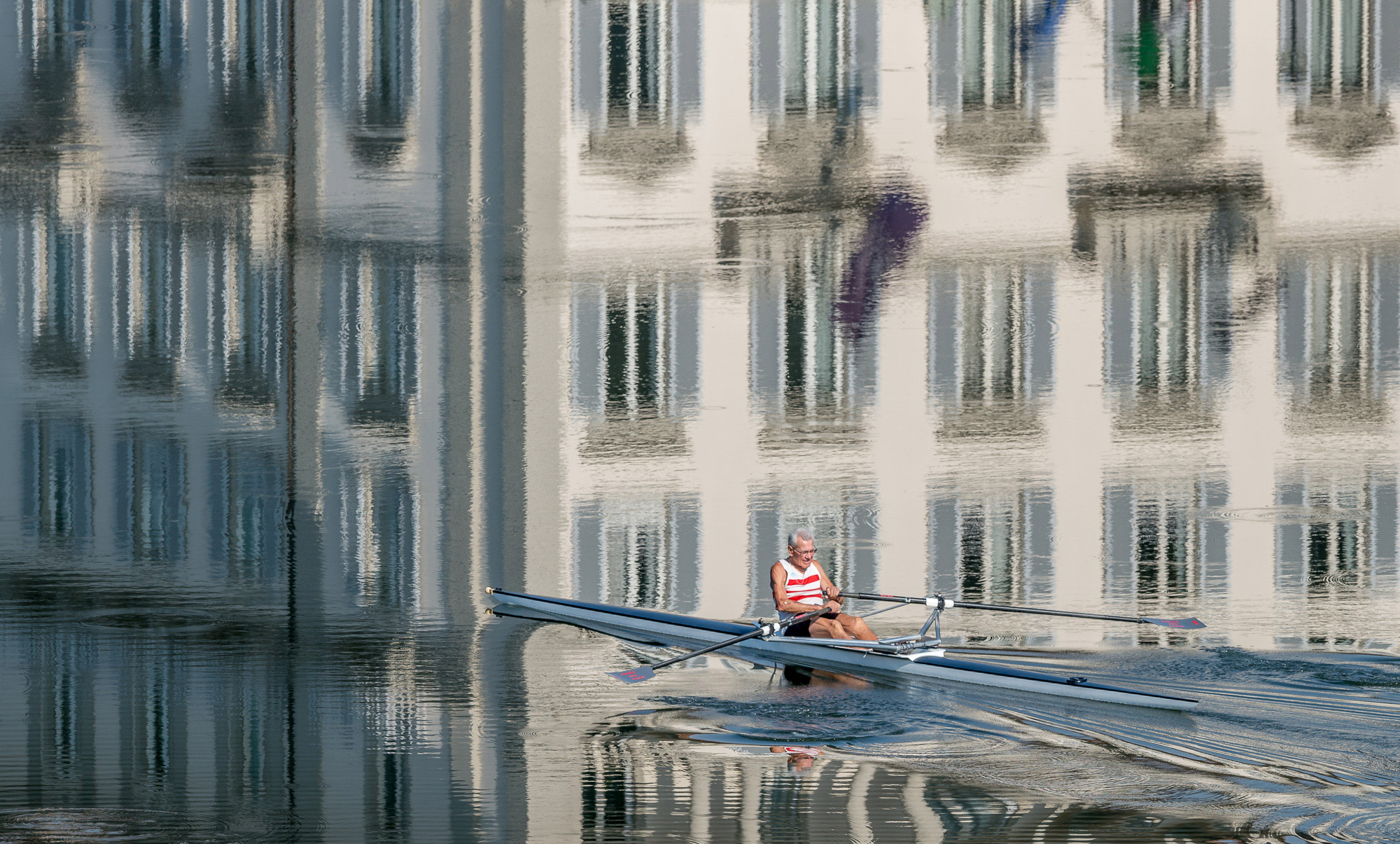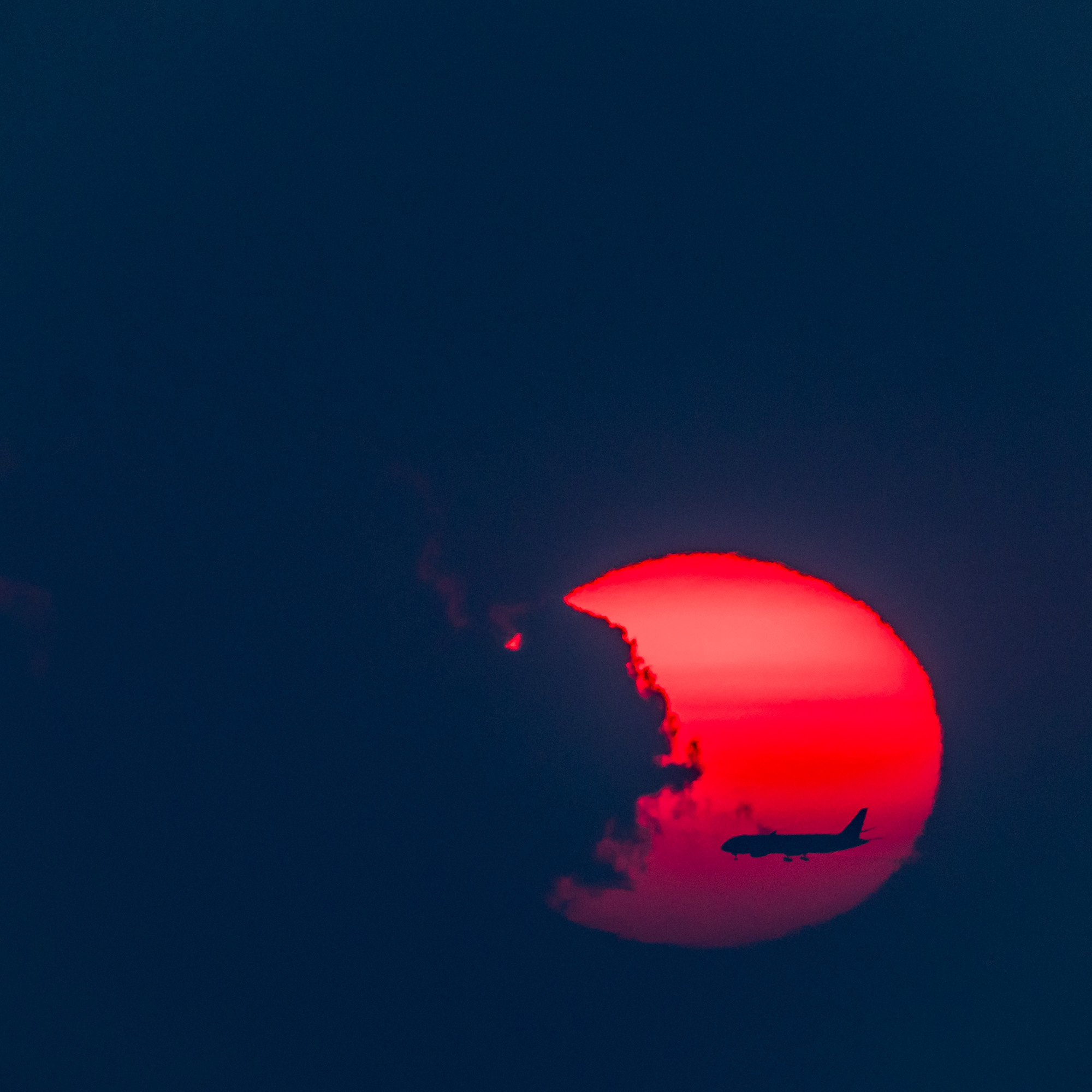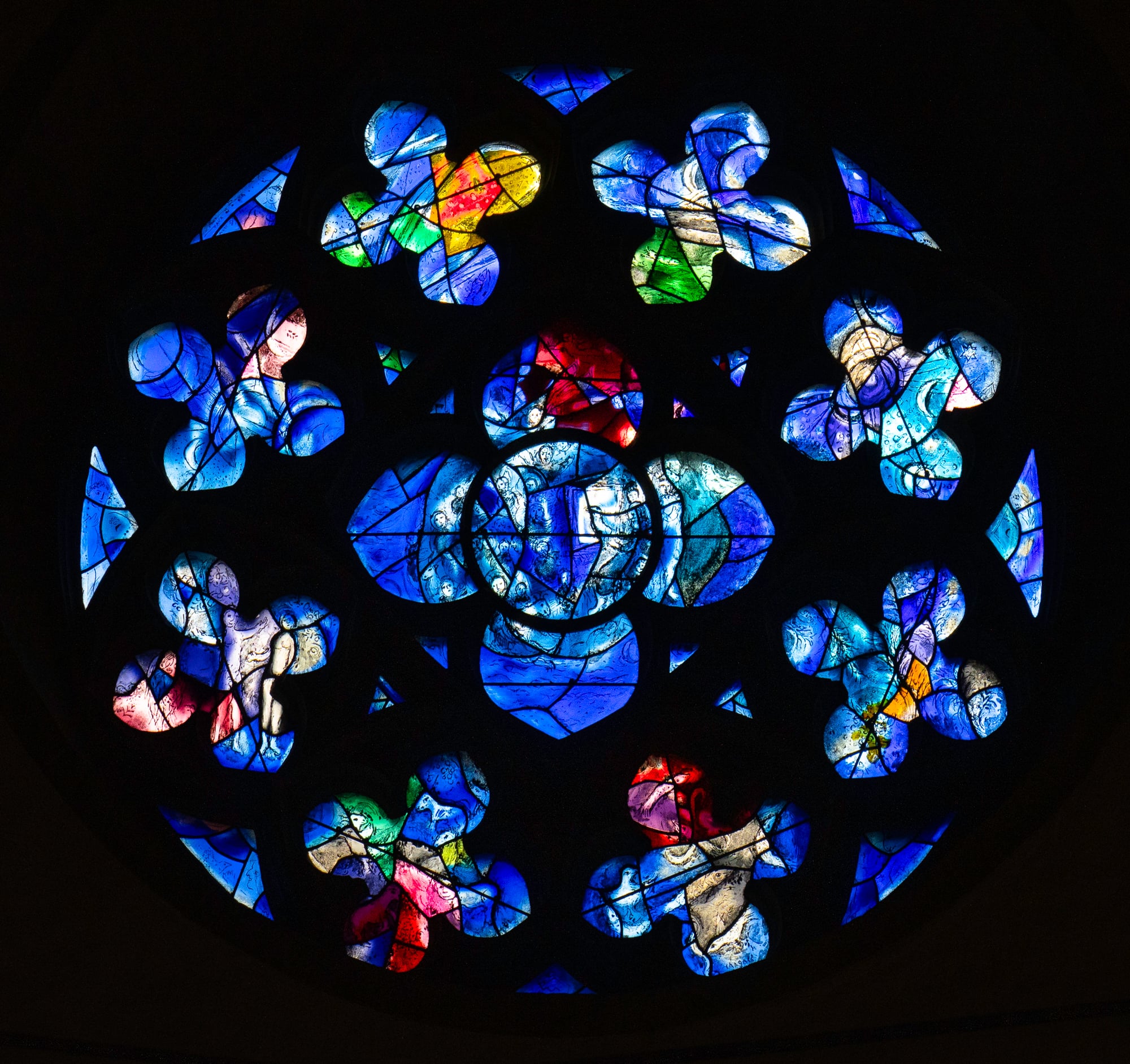In September I was fortunate enough be be invited on board the MV Orion as a guest lecturer on a 9 day cruise to some of the more obscure parts of Indonesia. As part of my role as Editor of Better Digital Camera magazine here in Australia I often have cameras under review, and so I chose to take along the new Panasonic DMC-GH1 as an alternative to my usual Canon 5DMk2. It turned out to be a very interesting camera.
Out of the box my first reaction was that it’s so small, without the lens it looks like a toy, but with the 14-140 lens it starts to look more serious. In fact the lens almost dwarfs the body and you tend to hold the camera more by cupping the lens in the left hand than by holding the body in the right. The grip is deep and positive and the controls, whilst necessarily cramped, are easy to find by feel without taking your eye from the viewfinder – this is a good thing.
Quality of build is excellent, the lens in particular reminds me of the Sony Zeiss lenses in style and smoothness of operation. The body has a neat flip out screen which makes the video functions even more usable – come on Canon where’re the flip out screens?
There’s no point in going through all the features, there are plenty of websites that do that. Luminous Landscape is renowned foruserreviews so here are my impressions, good and bad, and in no particular order, of using the GH1 in the field for 9 intense days. I used it freely and as I wanted to, with no change to my shooting style based on what the camera may or may not have been able to do.
Autofocus: very accurate even in low light. Not quite as fast as the high end dSLR lenses that I am more used to but perfectly acceptable and far better than any compact. I used the centre focus point exclusively, as part of my preferred ‘focus/recompose’ shooting style, and I found this to give me a high proportion of sharp images with the focus point where I wanted it.
Stabiliser: amazingly effective. The image just freezes in the viewfinder, even at the tele end, and I was getting tack-sharp hand held shots down to 1/15s at the wide end. Not always so good for video though – I’ll come to that.
Image Quality: very good indeed, I shot RAW exclusively so I can’t comment on the jpeg output but the sharpness of the images was up there with the best. I suspect there might be some hardware noise reduction going on as I thought I could see some subtle smudging in superfine detail but if I had to look that hard it was unlikely to be very much of a problem. If you check out the formal reviews I think you will see that this impression is born out by the tests.
High ISO: not as good as the high end dSLRs (of course) but up to iso800 the images were entirely usable for a modest sized sensor and a mid range priced camera this represents a very good result. At base iso there was no noise at iso200 it was barely visible and at iso400 it was there but very well controlled. Iso800 is perfectly usable, again, better than expected but beyond iso800 it started to get obvious (but still surprisingly good). I’d say that the noise was very competitive with any other camera up to iso400, and only marginally worse at iso800. For a Micro Two Thirds camera this is truly excellent.
Viewfinder: this was the first EVF I have used and it was fine. If you have the auto-preview set, like most people do, be aware that it shows in the viewfinder too, not just on the rear screen. This means you are effectively blinded for 4 seconds. After cursing and grumbling a bit I realised I could‚ turn preview ‘off’ (duh) and I was back to a fast and responsive viewfinder. The screen goes a bit grainy and smudgy in low light but still easy to judge focus – it was nowhere near as bad as I expected and the camera remained quite usable in interior room lights
Features and Options: too many to list, safe to say there are more features than you can shake a stick at and I used none of them! Aperture priority for me!
Control Wheel: under your forefinger, beneath the shutter button, the main control dial is small but positive. The feature I enjoyed was that if you click it in the mode changes and in auto this now sets the exposure compensation. You know where you are because the exposure display in the viewfinder changes to yellow and rotating the wheel gives you a plus or minus compensation. Click it again and you are back to normal. In manual mode clicking the control wheel toggles between aperture and shutter settings. Elegant and effective.
Manual Focus: often a worry on non-optical viewfinder cameras. No such problems here. Just trun the (curiously prominent)‚ focus dial to M and when you move the nicely smooth focus ring on the lens the viewfinder snaps to 10x magnification for fine tuning. This takes a bit of getting used to but works very well, especially if you are on a tripod. It’s a bit like ‘auto live view’ and the view switches back to full frame when you touch the shutter button. I like it.
Video: I’m torn here. One one hand it’s the best combocam so far for video as far as handling is concerned but on the other the AVCHD format is tedious to use in post. The Video JPEG option offers slightly reduced quality so AVCDH is the only way to get the best out of the camera. Unfortunately I found this format hard to work with as there are no distinct video files to download off the camera and back up. You have to import the files using some Panasonic software which seems to transcode them to some intermediate codec with a colossal file size
You can copy off the original folders intact but then you need to manually rename them as they are all called PRIVATE in the card directory. I imported the files into Final Cut Pro 7 with no problems using the camera’s USB cable (rather than a card reader), but using Log and Transfer they were transcoded to ProRes422 resulting in massive file sizes. This is problematic on the road with finite laptop HD space.
So, video handling : excellent. Post production convenience : average.
Image Stabiliser for Video: wonderful until you try to pan, then it’s power becomes the enemy. The stabiliser fights the pan and makes it impossible to move smoothly. Turn it off if you want to pan.
Overall Impression.
I enjoyed this camera. One day I left all my Canon stuff on the ship and took only the GH1. It was light, unobtrusive and effective as a street camera. The sense of freedom with only this tiny camera over my shoulder was very evident and whilst I cannot say I got images I could not have got with my Canon, I think it’s fair to say it did not hamper me in any significant way.
The ‘new school’ camera manufacturers like Panasonic are trying hard to break the mold of the traditional bulky dSLR. By and large they are succeeding and I’m keen to see how they progress. Will I hang up my Canon? No. However, at US1499 for a bodyandan optically excellent10x zoom it’s a lot of camera for the money. Recommended.
Invitation to a unique Photographic Opportunity.
As I write this I have once more been invited on the MV Orion as guest lecturer. I will be traveling to the Sub Antarctic Islands (Macquarie, Campbell, Snares, Auckland and Stewart) as well as the amazing Milford and Doubtful Sounds in New Zealand. If anyone is interested in some serious bird photography and visiting one of the wildest parts of the planet then you can join me at a reduced rate if you book using the code “Better Publishing”.‚ You will be offered a 20% discount which is worth a considerable amount. The cruise departs Hobart in Tasmania on December 1 st 2009 for 13 days and ends in Bluff, New Zealand.
Better still, also on board will be Glenn Ehmke, a threatened-species ecologist and award winning bird photographer, as well as Dr John Sparks who was the director of the BBC’s Bristol Natural History Unit and worked with Sir David Attenborough on Life on Earth.
Click Here for more details:
http://www.betterdigitalonline.com/blog/?p=337‚
Images:
Komodo Island, Indonesia
_1020129.jpg
_1020130.jpg
_1020130_detail.jpg
The 10x Zoom is the equivalent of a 28-280mm lens. The detail at the long end is impressive, even hand held, as this 100% crop shows.
Sumbawa Besar Town,‚ Sumbawa Island, Indonesia.
Spice_Islands_2362.jpg
Within‚ minutes of docking the crew are out painting the hull!
Spice_Islands_2368.jpg
Spice_Islands_2368_detail.jpg
The stabiliser allows sharp handheld shots at 1/10sec. (F 4.7 @ ISO400).
Spice_Islands_2374.jpg
Rambutan Fruit ISO400 F5.3 @ 1/15sec 80mm equivalent.
Spice_Islands_2378.jpg
Low light in the market. IOS400 F4.7 @ 1/20sec 50mm equivalent.
Others; Markets; Hand written Koran from 1711 in Sultan’s House; Sultan’s ceremonial regalia. All at ISO400 hand held.
Read this story and all the best stories on The Luminous Landscape
The author has made this story available to Luminous Landscape members only. Upgrade to get instant access to this story and other benefits available only to members.
Why choose us?
Luminous-Landscape is a membership site. Our website contains over 5300 articles on almost every topic, camera, lens and printer you can imagine. Our membership model is simple, just $2 a month ($24.00 USD a year). This $24 gains you access to a wealth of information including all our past and future video tutorials on such topics as Lightroom, Capture One, Printing, file management and dozens of interviews and travel videos.
- New Articles every few days
- All original content found nowhere else on the web
- No Pop Up Google Sense ads – Our advertisers are photo related
- Download/stream video to any device
- NEW videos monthly
- Top well-known photographer contributors
- Posts from industry leaders
- Speciality Photography Workshops
- Mobile device scalable
- Exclusive video interviews
- Special vendor offers for members
- Hands On Product reviews
- FREE – User Forum. One of the most read user forums on the internet
- Access to our community Buy and Sell pages; for members only.






